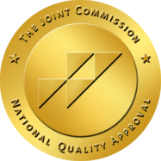
Ketamine Addiction and Treatment
Discover the problems caused by this disassociative party drug.
What is Ketamine?
Ketamine (Ketalar) is an injected anesthetic that blocks sensory perception.1 Ketalar has been available as a prescription drug in the U.S. since the 1970s and it is often used for veterinary purposes. Although the drug is more often injected, it can also be swallowed or snorted.1 Ketalar provides an individual with pain relief and short-term memory loss. During surgery, it is used as an "induction and maintenance agent for sedation", as well as a general anesthetic. Ketalar is also commonly used to control pain during burn therapy and battlefield injury. Ketalar quickly takes control of depressive feelings or suicidal thoughts.
Street Names
\"Ketamine\" is the generic name for this drug. Being familiar with street names, though, would help prevent overusing the same medication and reduce the chances of an overdose.1 Street names include:
- K
- Special K
- K2
- Vitamin K
- Super K
- Super C
- Lady K
- Ket
- Kit Kat
- Ketaset
- Ketajet
- Jet
- Super Acid
- Green
- Purple
- Mauve
- Special LA Coke
- Cat Tranquilizers
- Cat Valium
Ketamine Statistics
Ketalar is a typical "party" drug. The Association for the Advancement of Science reports that approximately 37 percent of electronic dance music (EDM) party attendees test positive for ketamine use when samples of their hair are tested--despite only 14.6 percent disclosing that they have used the drug in the past year."
Is Ketamine Addictive?
As with any drug, addiction results from tolerance, dependence, misuse, and high dosages. According to the National Library of Medicine, "Substance abuse among medical professionals is a cause for concern. Certain psychotropic substances such as Ketalar are at easy dispense to anesthesiologists, increasing the likelihood of misuse and dependence and raising several issues, including patient safety." A Ketalar addiction would be the result of increased tolerance and misused dosages, amongst other routes.
Is Ketamine Safe?
The purpose of any given drug is to create some alteration level to the body, either blocking pain sensors or decreasing how rapidly the brain communicates pain to the rest of the body. Although this is beneficial in scenarios such as post-surgery or high-risk injury, all drugs have side effects, Ketamine included.2 The Alcohol and Drug foundation states, "There is no safe level of drug use. The use of any drug always carries some risk. It's important to be careful when taking any type of drug."
Dangerous Drug Interactions
Ketalar in combination with either over-the-counter drugs or prescribed medication can lead to unwanted, unpredictable outcomes.3 Ketamine combined with either alcohol or opiates results in a lack of awareness of depressant effects. This can lead to over-consumption, vomiting, slowed breathing, coma, and death.2 Ketalar combined with either amphetamines, ecstasy, or cocaine results in body strain, which can increase an individual's heart rate uncontrollably.
Drug Class and Schedule
Any drug, substance, or chemicals formulated to create medicines are classified into 5 different drug schedules (categories).3 Each drug's schedule is determined by the drug dependency potential or its acceptable medical use.
Ketamine, or Ketalar, is classified as a dissociative anesthetic drug. Ketalar is legal only by prescription as a Schedule III drug.3 Schedule III refers to substances with a moderate to low chance of potential physical or psychological dependence.
How is it Used?
Ketamine can be injected, swallowed, or snorted.4 Ketalar can come in the form of either a clear liquid or a light-colored powder.
Ketalar in powder form is usually packaged in glass vials, plastic bags, or paper, glass, or aluminum capsules.
How is it Abused?
Ketamine is a common date rape drug and has become popular amongst teens and young adults at dance clubs.4 This common hallucinogen-producing drug can come as powder or liquid. The powdered form of Ketalar can also be formed by heating the pharmaceutical Ketalar and evaporating the liquid.
Ketamine for Depression
Ketalar was once strictly used as an anesthetic in battlefields and surgeries, but the drug has now become a major medication for depression.5 Studies show that Ketalar can quickly reduct suicidal thoughts or tendencies and relieve other symptoms of depression. Ketamine can also be used to treat anxiety symptoms.
Ketamine Nasal Spray
The Food and Drug Administration has approved Spravato, a ketamine nasal spray combined with an oral antidepressant. The ketamine nasal spray is used to treat depression in adults who have not found depression relief in other medications. Due to the potential risk of sedation, dissociation, or drug misuse, Spravato is only available through a restricted distribution system.
Ketamine Infusion
According to the American Psychiatric Nurses Association, "ketamine infusion therapy involves the administration of a single infusion or a series of infusions for the management of psychiatric disorders (e.g., major depressive disorder, post-traumatic stress disorder, acute suicidality."6
Ketamine Side Effects
Ketamine side effects vary in every individual based on numerous factors, including the individual's size, weight, overall health, level of tolerance, if other drugs are present in the bloodstream, their dosage, and the dosage's strength.
Short-term side effects include:2
- feeling happy and relaxed
- feeling detached from your body ('falling into a k-hole')
- hallucinations
- confusion and clumsiness
- increased heart rate and blood pressure
- slurred speech and blurred vision
- anxiety, panic, and violence
- vomiting
- lowered sensitivity to pain
Long-term side effects (for regular use) include):2
- headaches
- flashbacks
- poor sense of smell (from snorting)
- mood and personality changes, depression
- poor memory, thinking, and concentration
- ketamine bladder syndrome (see below)
- abdominal pain
- needing to use more to get the same effect
- dependence on Ketalar
- financial, work, and social problems.
Ketamine Bladder Syndrome
Frequently repeated doses of Ketalar can also develop Ketamine Bladder Syndrome, which is a painful condition resulting in difficulty holding urine and incontinence which may lead to ulceration.2
What does Ketamine do?
According to Harvard Medical School, Ketamine exerts an antidepressant effect on the brain likely through the NMDA receptors in the brain.5 Ketalar increases the neurotransmitter, or glutamate, in spaces between neurons, which activates connections in the AMPA receptor. By blocking the NMDA receptors and activating AMPA receptors, the brain\'s mood, thought patterns, and cognition. is affected. The effects of a Ketamine "high" can last up to an hour. The results are felt within minutes of use.
Ketamine Withdrawal Symptoms
As with any drug, once dependence increases and tolerance builds, the individual will likely experience withdrawal symptoms when drug use ceases. The symptoms of Ketamine withdrawal vary and can include:7
- Depression
- Anxiety
- Rapid heartbeat
- Fatigue
- Lack of appetite
- Insomnia
- Nightmares
- Restlessness
- Tremors
- Chills or sweats
- Anger
How long does Ketamine stay in your system?
The amount of time Ketamine remains in an individual's system depends on several factors, such as their body mass, their metabolism, and their water intake. Ketalar has around a 3-hour half-life meaning the drug can remain in one\'s system for 14 to 18 hours.
Ketamine Treatment for Addiction
Ketamine treatment requires a medically supervised detox in conjunction with rehabilitation. Although no medication exists to treat the addiction, cognitive behavioral therapy has proven effective outcomes. CBT is a beneficial Ketamine treatment due to the methods of targeting the behaviors the result from intoxicating substances.

